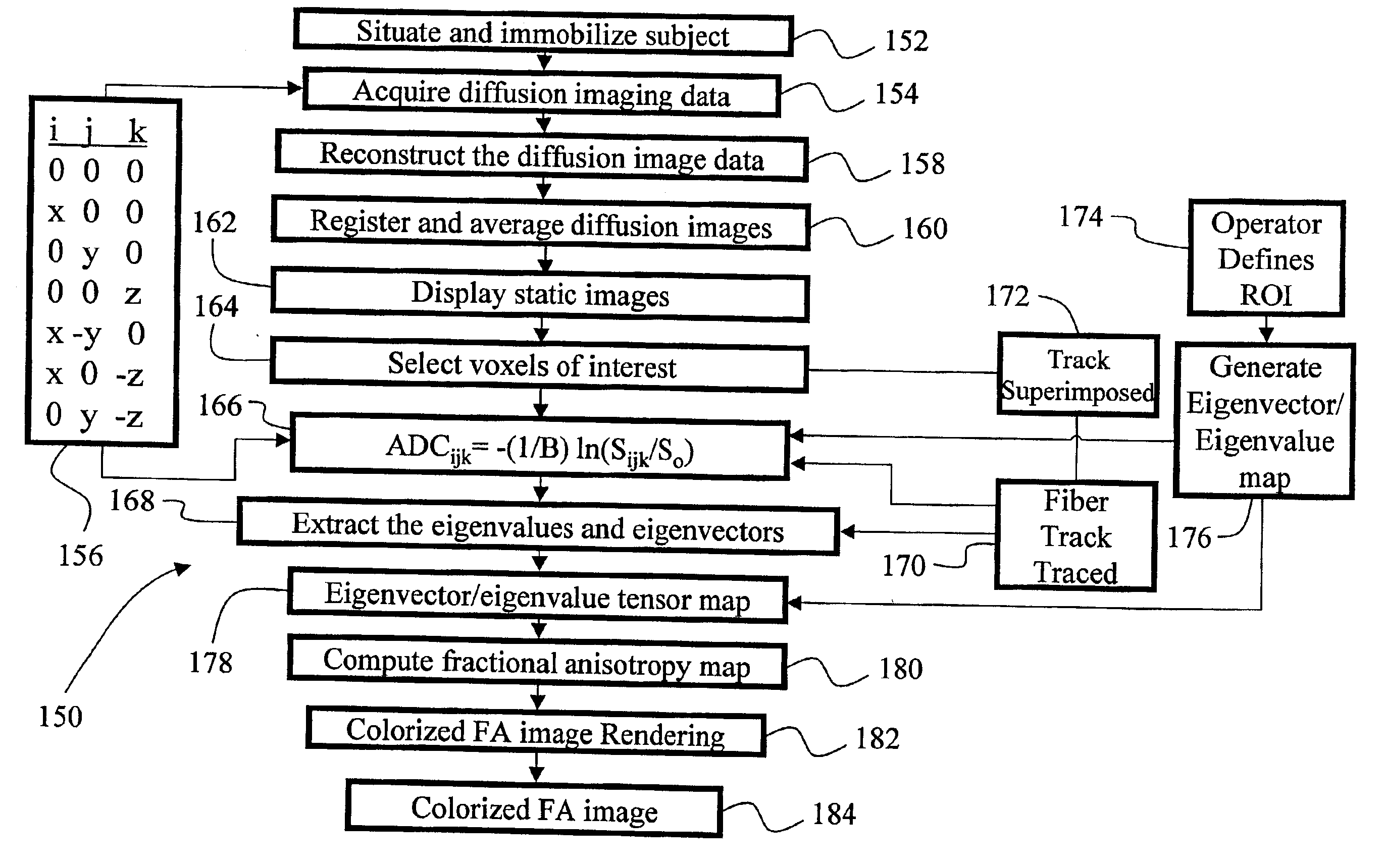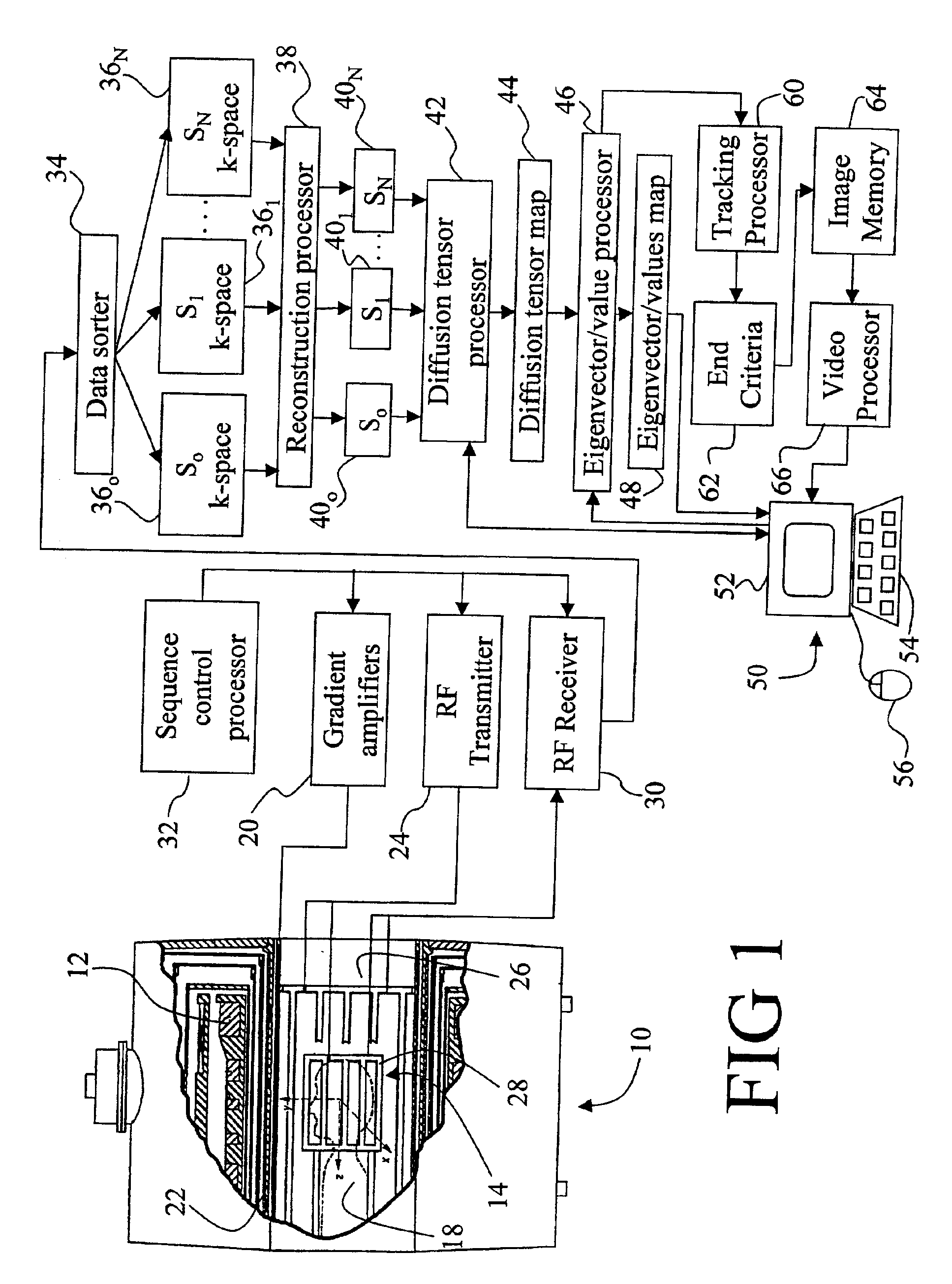Sweeping real-time single point fiber
a fiber and real-time technology, applied in the field of medical imaging arts, can solve the problems of wasting reconstruction time, inability to discern fibrous structure information from dt-mri images, and inability to easily discern fiber structures in conventional mri, so as to achieve more meaningful images and improve computational speed
- Summary
- Abstract
- Description
- Claims
- Application Information
AI Technical Summary
Benefits of technology
Problems solved by technology
Method used
Image
Examples
Embodiment Construction
With reference to FIG. 1, a magnetic resonance imaging (MRI) scanner 10 typically includes superconducting or resistive magnets 12 that create a substantially uniform, temporally constant main magnetic field B0 along a z-axis through an examination region 14. Although a bore-type magnet is illustrated in FIG. 1, the present invention is also applicable to open magnet systems and other types of MRI scanners. Imaging is conducted by executing a magnetic resonance excitation and readout sequence with the subject being imaged, e.g. a patient 18, placed at least partially within the examination region 14, typically with the region of interest at an isocenter of the magnet 12. For diffusion tensor MRI imaging of the brain region, the patient's head is preferably placed at the isocenter.
The magnetic resonance sequence includes a series of RF and magnetic field gradient pulses that are applied to the subject 16 to manipulate and detect magnetic resonance. More specifically, gradient pulse a...
PUM
| Property | Measurement | Unit |
|---|---|---|
| diffusion imaging | aaaaa | aaaaa |
| threshold | aaaaa | aaaaa |
| angle | aaaaa | aaaaa |
Abstract
Description
Claims
Application Information
 Login to View More
Login to View More - R&D
- Intellectual Property
- Life Sciences
- Materials
- Tech Scout
- Unparalleled Data Quality
- Higher Quality Content
- 60% Fewer Hallucinations
Browse by: Latest US Patents, China's latest patents, Technical Efficacy Thesaurus, Application Domain, Technology Topic, Popular Technical Reports.
© 2025 PatSnap. All rights reserved.Legal|Privacy policy|Modern Slavery Act Transparency Statement|Sitemap|About US| Contact US: help@patsnap.com



